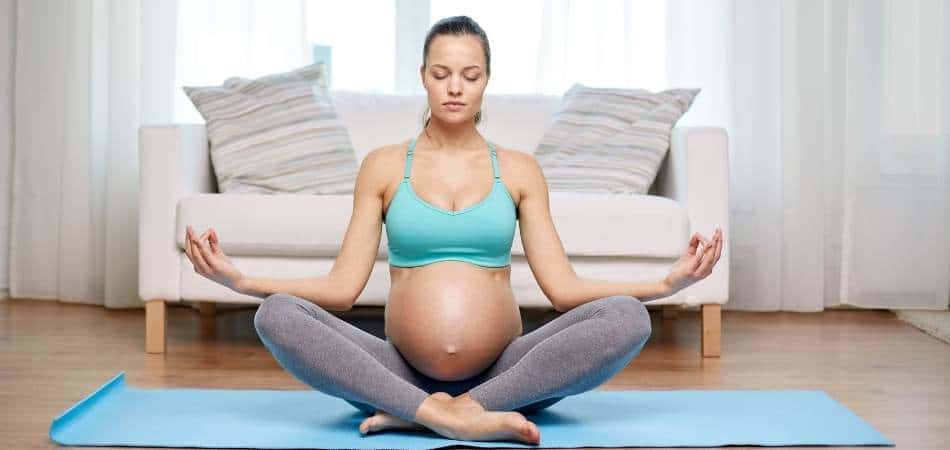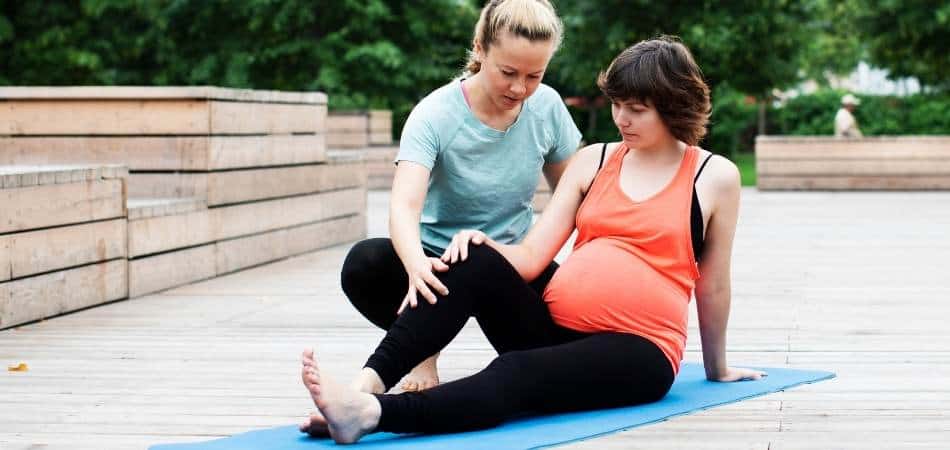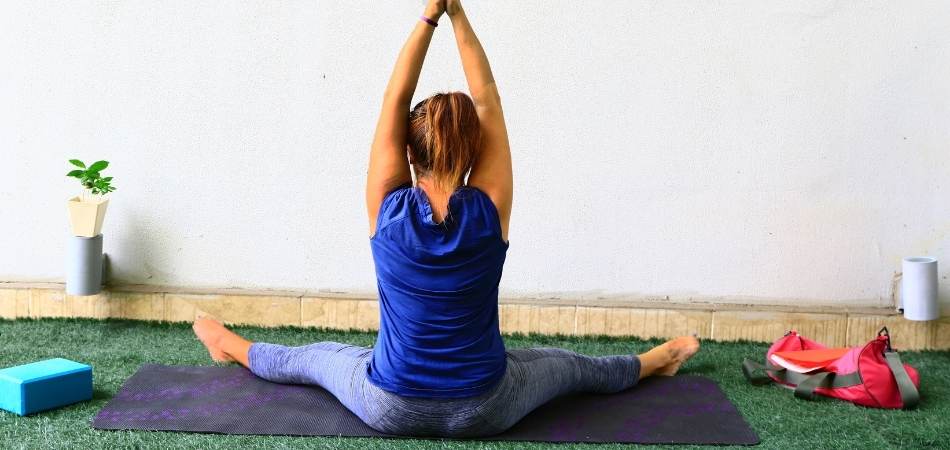This post contains affiliate links.
Hello! My name is Jennifer. I am a proud mom to one beautiful little boy and am dedicated to helping women like you live your best mom life!
I find solutions for YOU and share them everyday here on this blog… (like the super helpful FREE beginning prenatal birth class all of my mamas are loving)
Once you reach the second and third trimester of your pregnancy, you’re probably thinking ahead to delivery and you may even be a little anxious. that’s OK!. The good news is that there are a number of ways that you can get your body ready for birth.
Sign Up for a FREE Baby Registry That Has All The Perks and Benefits
My favorite baby registry (based on solid research) is the Amazon baby registry, mostly because its super convenient for the time we are living in. You can easily sign up for FREE by clicking here and the best part is you get a FREE welcome box too!
You can just shoot your Amazon baby registry link over to everyone you know through text messaging, email, facebook messenger, instagram messenger, twitter, you get it…
They also have many more perks and benefits I found out about while doing all the researching, you can read my post about it here.
More content I know you’ll love:
- Best Labor Positions for Birth (with pictures and examples)
- 4 Simple Ways to Prepare for Labor and Delivery
- 8 Ways to Prevent Tearing During Labor and Delivery
Your doctor may have some specific recommendations but pregnancy stretches for birth are a great option.
Not only can these stretches involve some physical activity in your day, they can help you relax and make delivery easier for you.
Benefits of Stretching During Pregnancy

These are just a few of the benefits that you can expect to experience from regularly engaging in stretching exercises.
- Loosen Stiff and Sore Muscles- you’re probably going to be feeling stiff or sore during your pregnancy, especially as the baby grows. Stretching can help by relieving pain, especially back pain. It may also help with pain you experience in the neck and chest.
- Relaxation- there are few things in life that are more stressful than being pregnant so stretching on a regular basis can help to loosen up your body and keep you calm and relaxed. You may notice that after taking on a stretching regimen, especially one with deep breathing, you feel more centered and balanced.
- Increased Coping- the stress of pregnancy isn’t something to laugh about so it’s important to take time to meet with your own needs. By creating the habit of taking the time to stretch and relax, you’ll be building a healthy habit. Once you have a baby, continue with your habits to spend some time on yourself.
- Increasing Range of Motion- when you deliver your baby, your body’s muscle groups are going to experience stress. Failing to stretch during pregnancy can actually lead to a reduced joint range of motion. This means that they perform less efficiently. However, by stretching regularly, you’ll keep your muscles and joints strong and flexible to have a safe and more efficient labor.
Safety Precautions When Stretching During Pregnancy
In general, exercise during your pregnancy has many benefits. However, this does mean that you should necessarily take on every type of exercise.
Stretching is considered to be a low impact activity. You may want to take note of any signs or symptoms that could indicate that you’re having problems.
Warning signs include contractions, vaginal bleeding, chest pain, and calf pain. If you notice any of these symptoms, stop what you’re doing and reach out to your doctor.
Some women may be concerned about stretching their abdominal muscles during pregnancy. Although this is understandable since your ab muscles are stretched naturally during pregnancy, you can still safely stretch them gently while pregnant.
Avoid any stretches that involve a deep back bend where your back is arched to be on the safe side.
Additionally, having certain medical conditions with your pregnancy may cause you to limit what types of activity you can perform. If you have a diagnosis of placenta previa, bleeding, heart and lung disease, preeclampsia, or severe anemia, you may still be able to do some of these exercises.
However, once again, make sure to talk to your doctor before any type of new exercise or stretching regimen to ensure that this is safe for you to perform. Your doctor may approve of this exercise or give you some precautions to follow.
In general, the types of stretches that you’ll want to avoid include any stretches that include deep back bends or other contortions. The camel and bow pose in yoga are not recommended.
Keep in mind that you may also experience cramping in your calves when you point your toes.
You can modify the stretches below to flex your feet instead. After the first trimester, it’s also a good idea to avoid laying on your back for an extended period of time.
So, make sure that you avoid any poses that have you do this for too long. If you’re concerned overall, you can consider taking a prenatal yoga class which will take you through stretches safely.
Your best rule of thumb though is to don’t do any stretch that doesn’t feel good.

What to Avoid When Stretching During Pregnancy
Although you can safely stretch during most pregnancies, it’s always best to discuss stretching and any exercise programs with your doctor before starting.
Hip opening stretches for pregnancy are typically low-impact and safe to perform.
However, depending on your own individual health, your doctor may have some recommendations for you or precautions to follow. If you are going to do any exercising, its best to warm up first.
Even stretching is a good idea after your body has had time to warm up so this may not be the best option first thing in the morning.
If you’re doing any type of exercise, even walking, consider saving your stretching for after you exercise.
While each woman should pay attention to her own body, there are a few things to avoid when you’re doing these stretches as well as any type of exercise.
Don’t Bounce
Bouncing while you’re stretching may feel as though you’re getting deeper into the stretch but it’s actually going to increase your risk of pulling a muscle.
Instead, focus on getting into the stretch slowly and naturally and holding for 20-30 seconds in most cases. You should feel the stretch but should not feel any pain.
Bouncing may actually make you less flexible and undo the hard work you’ve done. If you’re not flexible and frustrated, remember that stretching will help you get there so patience is the key.
Don’t Overdo It
When you’re pregnant, your body is producing a hormone known as relaxin. This hormone loosens the ligaments in your pelvis and works to make delivery easier.
However, since relaxin affects the ligaments in your body, you’ll probably notice that you become more flexible, especially as your pregnancy progresses.
This may cause you to be at a higher risk for overstretching and developing injuries.
It’s best to pay attention to your body and avoid getting into a range of motion that doesn’t feel natural. Stretching should never feel painful so avoid this if you can.
Pregnancy Stretches to Do Before Birth
These are a few of the stretches to do in as you prepare for the birth of your child. Keep in mind that some may be more challenging for you so consider a few of these options.
If one doesn’t work for you, simply move on to another one. However, regardless of whether you do all of these or just a few, they can provide meaningful benefits.
Butterfly Pose

This yoga stretch is a great one that will help you open your hips and inner thighs. It also helps to ease any aches that you may have in your lower back so is a favorite with expectant moms.
- Sit on the ground and bring the soles of your feet together. Allow your knees to point out to the side
- Grasp your feet or ankles firmly and draw your heels into your body. Move them into your body as close as you can comfortably manage.
- Once in position, lean forward slightly and hold in that position. Focus on taking large breaths.
- Stay comfortable in that position for a few minutes. If you want to deepen the stretch, press your thighs down with your elbows or hands gently. Hold on that pose and allow your body to stretch naturally as you breathe.
Squats or Garland Pose

Doing squats may seem counterintuitive but this pose will actually help to strengthen thigh muscles and open up your pelvis. Squat on a regular basis and you’ll find that you may give birth faster. If you’re pregnant and ready to have your baby, his may be a little extra motivation!
- Start by standing with your feet facing forward and slightly outward. The feet should be a shoulder-width apart or slightly wider
- Slowly bend your knees forward and lower your body. Extend your arms out in front of your body for balance if needed
- Balance the weight of your body on your heels and then pause in this position
- Breathe in and slowly rise up
- Repeat this action several times, stopping when you start to feel tired. You can do squats a few times a day whenever you have a free moment
Hip Flexor Stretches

The hip flexors are a muscle group on the top of the thighs that let you lift your knees and bend at the waist. Working on opening up this muscle group will help you during childbirth so it’s a great way to prepare.
- Kneel on your right knee and put the other foot in front of you. You should be at a right angle with your leg
- To help you balance, put your left hand on the left thigh and the right hand on the hip or the left thigh
- Keep your back straight and lean forward to shift your body weight towards your forward leg. You should feel the stretch of your body on the right thigh
- Hold in this position for 30 seconds and then switch legs and repeat on the other side. Consider doing this stretch 2-3 times a day.
Pigeon Pose

This may be more challenging of a stretch for some so it’s a good idea to use a yoga strap or a yoga brick in order to help you ease into this hip stretch. As your flexibility increases, you may not necessarily need this tool though.
- Sit on a yoga mat with one leg extended behind you
- With the other front leg, bend it to a 90 degree and walk the foot to the inside edge of the mat
- Inhale while laying your knee down flat. Allow your leg to bend into the stretch
- Hold this pose for a few minutes then repeat on the other side
Glute Stretch

This is a stretch that you may have used after running or other exercises and it’s a great way to release the hips and glutes. You’ll be amazed at how helpful this stretch can be when you want to deepen your squats so consider starting with this stretch before moving on to some of the other ones.
- Lay on the back with your knees bent and your feet flat on the floor
- Lift the right leg and cross the ankle over the knee
- Reach your hands around your left leg in order to meet under the thigh
- Draw your left thigh toward your body while keeping the torso pressed against the floor.
- While drawing the thigh in closer, use your right elbow to press the right knee away from you.
- Hold this position for a few breaths and try to deepen the stretch as you exhale. Switch sides and repeat.
Seated Straddle

This pose is an easy one and will help you to open up your inner thighs. It’s a good one to start earlier in the pregnancy as well since it may be more challenging to do when you’re further along. However, it’s never too late to start so consider this stretch when you’re starting your second trimester.
- Sit on the floor and extend both legs widely with both feet flexed
- Press the hamstrings into the floor to keep your spine straight
- If you’re already feeling the stretch, stay in the position. If comfortable, walk you hands out in front of you and stay in a position that feels like a stretch.
Starting a Stretching Regimen
If you already participated in yoga or similar exercises before you became pregnant, you may find that it’s easier to engage in this stretching regimen.
However, if not, then you may find that it’s a little more challenging to pick up. It’s never too late to start though! Start off slow and begin these stretches a few times a week.
If you can’t move your body into the full stretch, start off gently and then increase your stretching as your body adjusts.
Even small improvements in mobility and flexibility can make a difference. Use these stretches to keep your body strong and limber throughout your pregnancy.



Thanks for these, my backs been hurting lately. I will try them tonight. 🙂